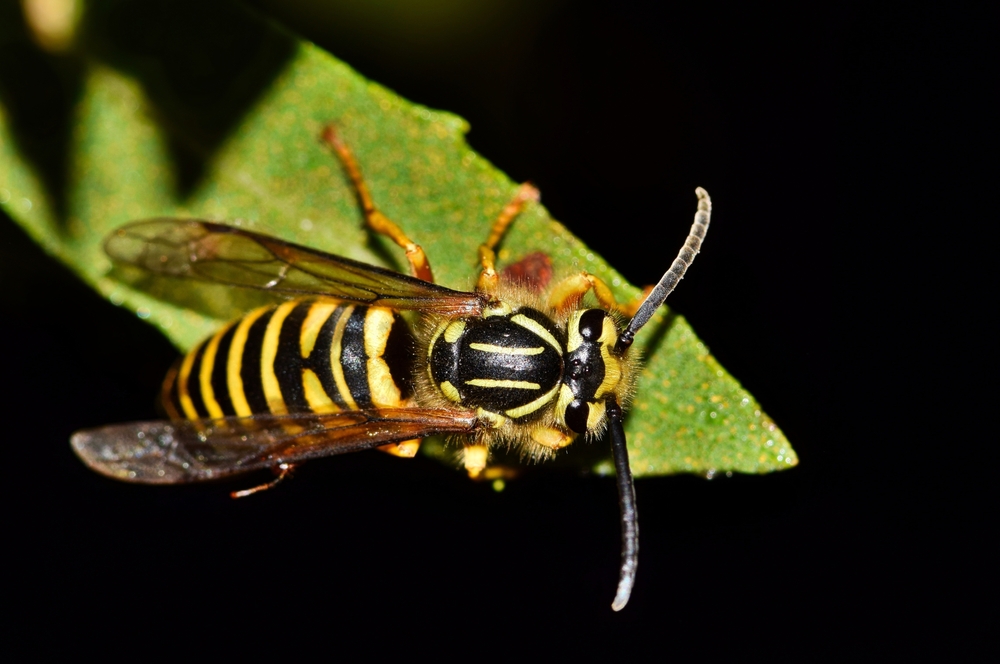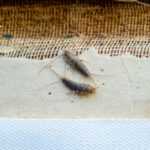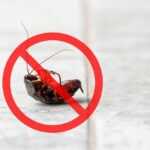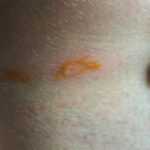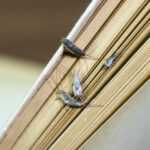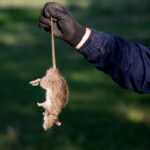Effective Pest Control Yellow Jackets: Identification & Removal Guide
Yellow jacket infestations can be both dangerous and hard to control. This guide will help you identify yellow jackets, understand their behavior, and provide methods for effective pest control yellow jackets.
- Yellow jackets are identifiable by their smooth, segmented bodies and aggressive behavior, which differs from bees’ fuzzy appearance and docile nature.
- Early detection of yellow jacket nests through signs like increased activity, buzzing, and droppings is crucial to prevent stings and infestations.
- Effective yellow jacket control requires a combination of preventative measures, DIY removal techniques, and professional extermination for significant infestations.
Identifying Yellow Jackets
Yellow jackets are often mistaken for bees due to their similar size and yellow and black coloration. However, unlike the fuzzy appearance of bees, yellow jackets have smooth bodies with a distinctive segmented structure. They typically range from 1/2 inch to 3/4 inch in length and can also display white markings depending on the species.
One of the key features that set yellow jackets apart from other social wasps and bees is their blunt abdomen, which lacks the narrow waist seen in paper wasps. This physical trait, combined with their less hairy bodies, makes them more streamlined and agile, allowing them to be more aggressive when defending their nests.
Identifying a yellow jacket involves noting its black and yellow stripes and segmented body. Unlike the pollen-collecting, more docile bees, yellow jackets are predatory scavengers often found at outdoor events and near garbage cans. Yellowjackets are also commonly seen in these environments.
Understanding Yellow Jacket Behavior
The social structure of yellow jackets is fascinating and complex. A typical yellow jacket colony consists of yellowjacket colonies:
- A queen, who is responsible for initiating and building the nest, laying the first batch of eggs, and nurturing the initial group of workers.
- Workers.
- Sometimes drones (males). Social insects play a crucial role in understanding these dynamics.
As the colony grows, new queens and males are produced, ensuring the continuation of most species in the colonies.
Yellow jackets are notoriously aggressive, especially when they feel their nest is threatened. This aggressive behavior is triggered by chemical communication within the colony:
- When a yellow jacket perceives an intruder, it releases pheromones that signal other colony members to attack.
- This defensive mechanism makes yellow jackets particularly dangerous.
- They will vigorously defend their nests against perceived threats.
Yellow jacket aggression is indicated by persistent flying towards people, pets, or food, which can lead to stings if provoked. Increased activity around your property often signals a nearby nest, requiring prompt attention to prevent stings and infestations.
Common Nesting Sites
Yellow jacket nests are marvels of insect engineering, constructed from a paper envelope-like material made from wood fibers mixed with saliva. These yellowjacket nests have a distinctive wood and paper appearance and can be found in various sheltered locations. Common nesting sites include under shrubs, in tree stumps, and within wall voids where they build nests. A yellowjacket nest can be particularly challenging to locate due to its hidden nature.
Ground nests are particularly common and are typically located under shrubs or in other sheltered areas. Identifying an underground yellow jacket nest involves observing yellow jackets entering and leaving a hole in the ground, which serves as the nest entrance. These entrances are usually about the size of a nickel, making them somewhat discreet but still noticeable upon close inspection.
Besides ground nests, yellow jackets may construct aerial nests in attics, between walls, and other seldom-accessed spaces, including eaves. Regular inspection of potential nesting sites is vital to catch infestations early and prevent them from escalating.
The Dangers of Yellow Jacket Stings
Yellow jacket stings are not only painful but can also be extremely dangerous. For individuals allergic to yellow jacket venom, even a single sting can trigger severe allergic reactions, including anaphylaxis, which requires immediate medical attention. Symptoms of an allergic reaction can include dizziness, difficulty breathing, wasp stings, and widespread swelling.
Non-allergic individuals typically experience localized pain and swelling at the sting site. However, multiple stings can lead to more serious complications, such as low blood pressure and heart irregularities. Repeated stings can also cause hypersensitivity, making future reactions more severe.
Due to the risk of severe reactions, caution around yellow jacket nests and seeking medical attention if stung is crucial. Recognizing the dangers of yellow jacket stings highlights the need for effective pest control and preventive measures to safeguard yourself and your family.
Signs of a Yellow Jacket Infestation
Detecting a yellow jacket infestation early can prevent serious problems down the line. Constant sightings of yellow jackets, especially around food, indicate a potential nearby nest. Buzzing noises coming from the ground or walls are another telltale sign of an active colony.
Additional indicators are small black droppings, shed skins near entry points, and a strong odor near the nest. Visually confirming nests, typically made from chewed plant fibers, can verify yellow jacket activity.
Effective pest control requires monitoring activity and locating nest entrances to promptly address the infestation of insects.
Effective Yellow Jacket Control Methods
A multi-faceted approach is necessary for controlling yellow jackets, with comprehension of their behavior and nesting habits being crucial for effective management to rid them effectively of bee.
This section covers three main methods: Preventative Measures, DIY Removal Techniques, and Professional Extermination Services.
Preventative Measures
To prevent yellow jackets from nesting near your home, you can:
- Reduce potential nesting sites and attractants.
- Seal gaps and cap open pipe ends to discourage nest building in protected areas.
- Maintain clean outdoor areas free of food particles to eliminate food sources that attract them.
A tidy garden free of organic matter can deter yellow jackets from nesting nearby. Wearing light-colored, tightly woven clothing, avoiding scented products, and scheduling outdoor activities for early morning or late evening can reduce the risk of stings.
DIY Removal Techniques
For small yellow jacket nests, DIY removal may be viable. Key points for effective removal include:
- Directly applying insecticides to the nest is crucial.
- Avoid gasoline due to fire hazards and environmental risks.
- Use insecticidal dusts such as silica aerogel combined with pyrethrins to destroy nests.
After applying insecticidal dust, plug holes with steel wool to prevent yellow jackets from escaping and re-establishing nests. Exercise caution and wear protective clothing during DIY nest removal.
Yellow Jacket Traps and Insecticides
Yellow jacket traps effectively reduce their populations by:
- Using a chimney effect to lure and capture them
- Being reusable and non-toxic
- Being baited with sweet things These traps are particularly effective during warmer months and early fall outdoor events, addressing yellowjacket problems. Yellow jackets are attracted to these traps, and yellow jacket traps work in the fall.
Sprays like PT Wasp Freeze provide immediate results by quickly incapacitating yellow jackets upon contact. Professional-grade insecticides like Onslaught offer long-lasting control and are effective against various pests, including vespula spp and aerosol products.
Combining traps with insecticides increases the effectiveness of yellow jacket control efforts.
Protecting Your Home and Family
Abundant food sources attract yellow jackets, making urban settings and outdoor activities prime targets for nests. To prevent nesting near your home:
- Keep food tightly sealed and avoid leaving it uncovered outdoors.
- Use screens on windows and doors.
- Use tight-fitting lids on trash cans.
- Frequently clean waste receptacles.
Informing guests about yellow jackets and how to avoid attracting them can enhance safety during outdoor events. These preventative measures help protect your home and family from these aggressive pests.
Understanding yellow jackets’ behavior, identifying their nests, and implementing effective control methods are essential steps in protecting your home and family. Regular inspections, preventative measures, and professional pest control services like those offered by Gopher Patrol can help manage and eliminate yellow jacket infestations. Take action today to ensure a safe and enjoyable outdoor environment free from yellow jacket threats.
Frequently Asked Questions
How can I identify a yellow jacket nest?
To identify a yellow jacket nest, look for paper-like structures in sheltered areas, such as under shrubs or in tree stumps, and observe for activity around holes in the ground where yellow jackets enter and exit. This will help you locate their nests effectively.
What should I do if I get stung by a yellow jacket?
If you get stung by a yellow jacket, promptly clean the sting area with soap and water, apply a cold pack to minimize swelling, and consider taking an antihistamine. Seek emergency medical assistance if you experience any severe allergic reactions.
How can I prevent yellow jackets from nesting near my home?
To prevent yellow jackets from nesting near your home, seal gaps and cap open pipes while maintaining a clean outdoor environment free of food scraps. Additionally, installing screens on windows and doors can help keep them out.
Are yellow jacket traps effective?
Yes, yellow jacket traps are effective in reducing their populations, especially when used with sugary baits. For even better results, combine traps with insecticidal sprays.
When should I call a professional exterminator for yellow jacket control?
You should call a professional exterminator for yellow jacket control if you have a large infestation, multiple nests, or if you feel uncertain about safely handling the situation yourself. Their expertise ensures effective removal and safety.
